|
Home
|
All pages | About us | Contact |
|
Home
|
All pages | About us | Contact |
|
Skulls
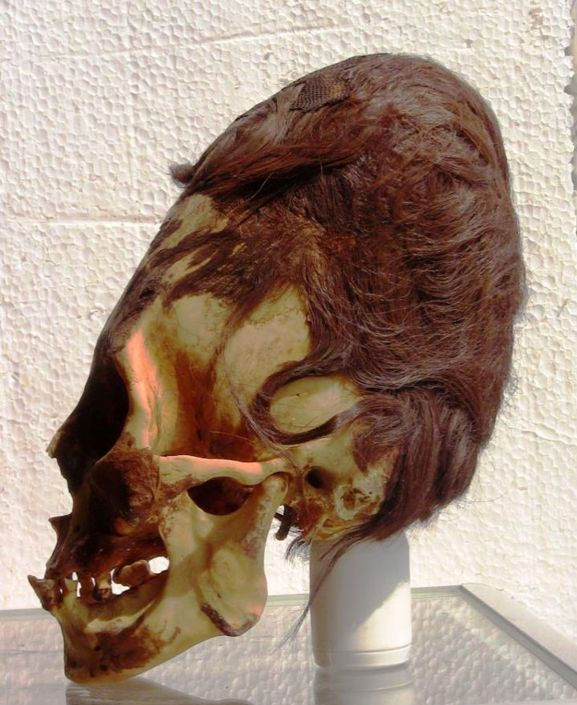 Elongated skull with red hair, as there have been found many in Paracas, Peru The most common deviating skull is the so-called 'elongated skull'. Many of these skulls have been found in Peru especially near the Nazca Lines and the Paracas (1) peninsula. New finds are still made with some regularity, for example by grave robbers who offer them on the black market. The skulls are characterized by their flat, elongated form (2), and in many cases the hair and mummified skin is still attached (3). These skulls can be viewed in, among other places, the private museum "Paracas History Museum" (4) and the regional museum of Ica. Similar skulls have been found all over the world, including in Bolivia, France, Norway, Malta, Egypt, northern Iraq, Ukraine, Siberia (5), South Africa (the so-called "Boskop Man") and Vanuatu in Oceania. The custom of tied-off children's heads, which actually existed in some cultures, was probably the consequence of the admiration the population had for their extraterrestrial visitors, who had long heads. They imitated them, in hopes of becoming just like them. We find this behavior everywhere in the world (8). However, the result looked very different from the elongated skulls (9). In Egypt, not only skulls were found, but also wall decorations and figures of people with remarkably long heads 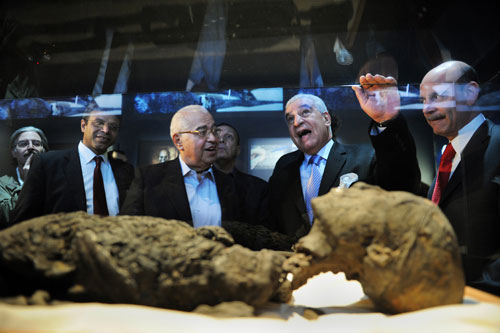 Replica of king Tutankhamun's mummy at an exposition in New York. Note the long skull Some elongated skulls of Paracas have been tested for DNA, but no match was found with any existing life form on Earth (11). From sources within the American black ops circuit however, the secret operations of the illuminati, we get the impression that it has already been known for ages who these strange skulls belonged to. Not only that, they even work together with those entities! Preston Nichols, a technical engineer who worked for the ultra secret Montauk Project near New York, declared that all kinds of negative extraterrestrials were involved in that project, including Greys and reptilians. Humanoids from the Sirius A star system also participated, he says (12). According to him, these were the same people that were worshipped as gods in Ancient Egypt. They have longer heads and larger eyes than we do. Most other sources, though, say that these negative humanoids did not originate from the Sirius A system, but from Sirius B. So perhaps Preston Nichols was mistaken or wrongly informed. Not all inhabitants of the Sirius star system seem to be negative, by the way. In Suzy Ward's books (13) she channels Sirian entities who explain that this is an incredibly extensive system. Various space-traveling civilizations live there, which all look different. Some have a genetic link to us earthlings, and have been observing and visiting our planet for as long as we've been existing. Others are so highly developed that they don't even need a body or space ship anymore, and only move through the endless Creation as group consciousness. Native tribes in the mountains of China and Tibet and the Dogon tribe in Mali, Africa, also tell of long passed contacts with visitors from the Sirius star system. But they seem to be yet another Sirian race, some kind of "water beings", who look a bit like mermaids. The priests of the Dogons told Western researchers about the existence of yet a third star in this system, a small one named Sirius C, much earlier than the mainstream science discovered it in 1995 (14). "There are myths about gods who came down from heaven and had elongated heads. They were very special and were worshipped" - Igor Skandakov, manager Museum of Cultural History in Omsk (5) |
|||
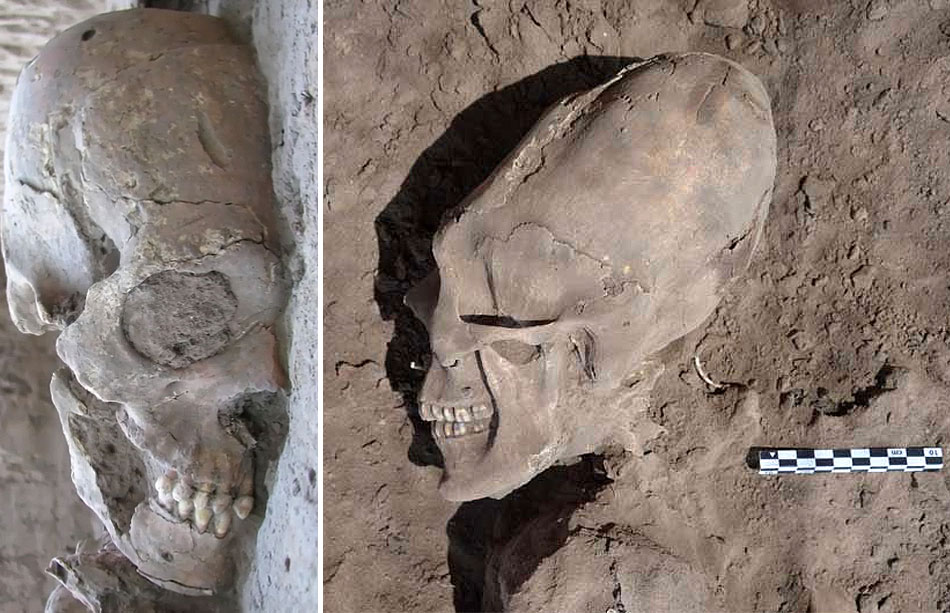 25 old skeletons were found in the village of Onavas ( North-West Mexico) in 2012. 13 of them had elongated skulls, 5 of which had strange teeth: pointy front teeth and flat canines (15). The archaeologist's attitude in the article is typical of modern science. Although much is unclear about the graves, she firmly reports that skull- and teeth discrepancies are "the result of the customs used by wealthier individuals during that time." While in the simple graves not a sign can be found that these individuals were indeed wealthy. Reason for 17 of the skeletons being children is, according to her, "possbily because too much force was used reshaping their skulls." |
|||
|
The Anunnaki Besides human visitors from the Sirius B system, the Anunnaki, the negative humanoid/reptilian species from the Orion constellation and planet Niburu, supposedly also have long skulls. Over 200,000 years ago, these extraterrestrials were responsible for the creation of our human species, the homo sapiens (16). They mixed their own reptilian DNA with the DNA of the Bushmen in South Africa, which had originally come from Lemuria. This way, they created a slave race that had to dig for gold for them in mines. The Anunnaki needed gold dust to protect the weakening atmosphere of their own planet Nibiru against the harsh influences of the universe. After this project, the Anunnaki kept on visiting us regularly. They interfered with our development in negative ways, even until recently. Moreover, researcher Bill Ryan from Project Camelot, who has contacts within the black ops circuit, said that the Anunnaki have remarkably large chins. This description matches many discovered skulls, which have a large, broad chin. Their bite isn't straight, as in humans, but crooked. In the photos below this non-human jaw form and the lack of certain cranial sutures can be seen well. |
|||
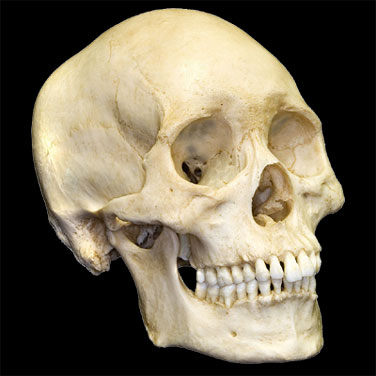 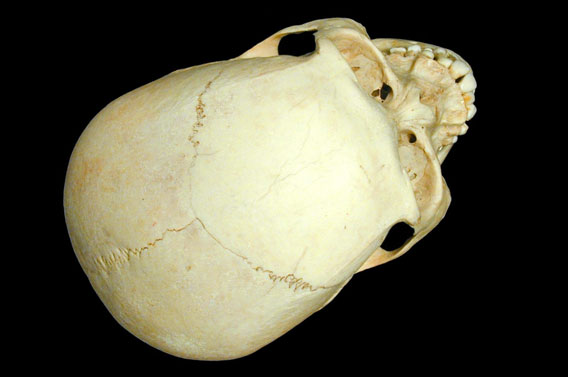 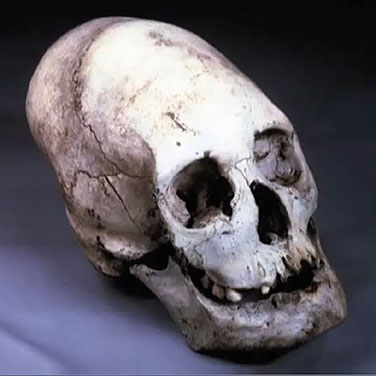 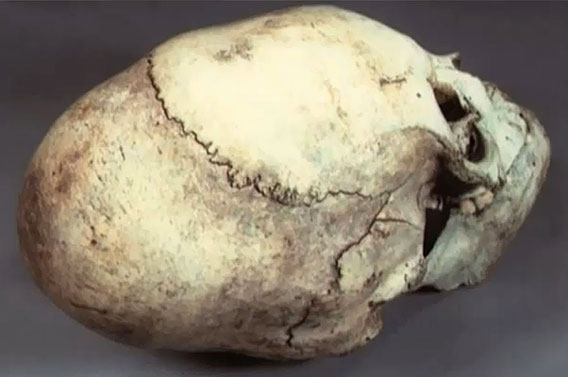
Above: a human skull. Below: the skull of an 8.5-foot tall (!) skeleton that was found (17) near the old area of Puma Punku The human skull has a narrow chin and a straight bite (left), while the Bolivian skull, which probably belonged to an Anunnaki, has a broad chin and a crooked bite. On the right you can see that the Bolivian skull cannot possibly have belonged to a human: the sagittal suture, which runs from the middle of the head to the back and is characteristic of homo sapiens, is missing here entirely |
|||
|
Starchild In 1930 an American teenage girl found a small, peculiar skeleton, beside a woman's skeleton, in an old mineshaft over 60 miles southwest of the Mexican city, Chihuahua. She took the skull home and kept it as a souvenir in her garage in El Paso, Texas, for the rest of her life. In 1998 the strange skeleton came into the possession of two other inhabitants of El Paso, Ray and Melanie Young. 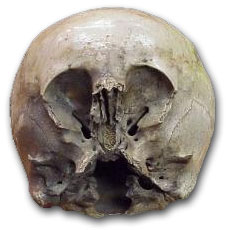 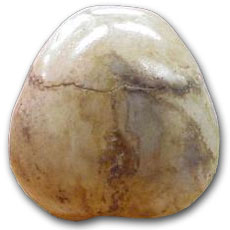 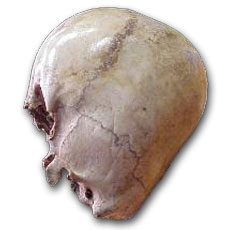 Melanie was a nurse and couldn't believe that this skull was a human defect. She took it to author and researcher Lloyd Pye (18), who had written a book on humanoids such as Bigfoot in America and the Yeti in the Himalayas, and on the influence of the Anunnaki on humans' development. Pye was fascinated by the skull (of which only the top remained) and had its DNA tested several times. This showed time and again that the skull was hundreds of years old and the creature's mother must have been human, but that the father's DNA didn't occur anywhere on Earth (19). Pye christened the creature "Starchild" and offered the skull to science. They, however, showed no interest at all. Later, a similar skull was found in Peru (20). 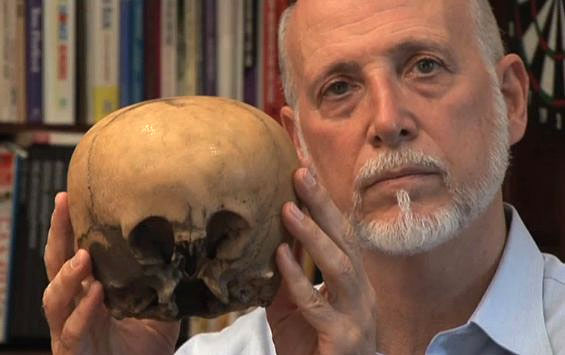
Lloyd Pye (1946 - 2013) with his "Starchild" skull The Zealand Skull 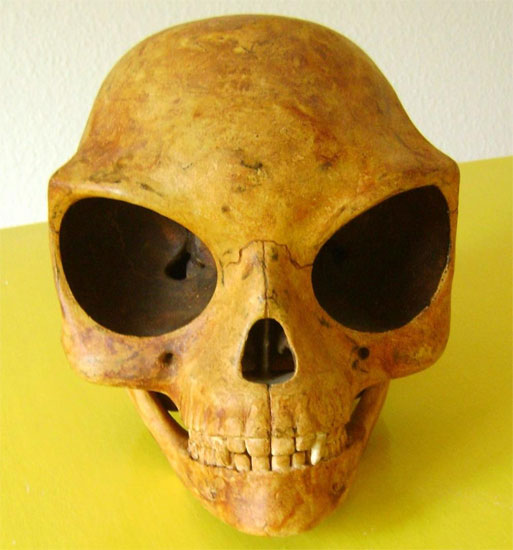 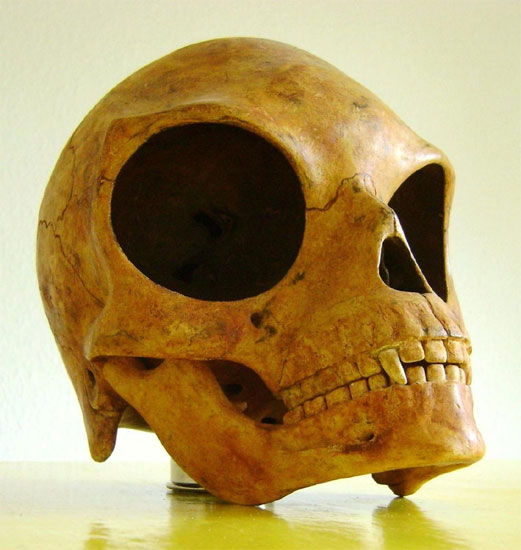 
The Zealand Skull (21) was discovered in 2007 in Olstykke, Denmark by workers who were replacing sewer pipes. Because of its bizarre shape, most scientists thought it was a joke and showed no interest in researching it. Only in 2010 the skull was first examined at the College of Veterinary Medicine in Denmark. The researchers concluded that it was real, but they had no idea to what kind of being it belonged. The skull is larger than that of a Homo Sapiens, so at first they suspected it might be some sort of horse. Further examination revealed that this was not the case, though. The skull was then sent to the Niels Bohr Institute in Copenhagen. Carbon dating revealed that this being lived between 1200 and 1280 BC, but they were unable to provide any more information about the origins of the skull. No other bones like these were found in the area. 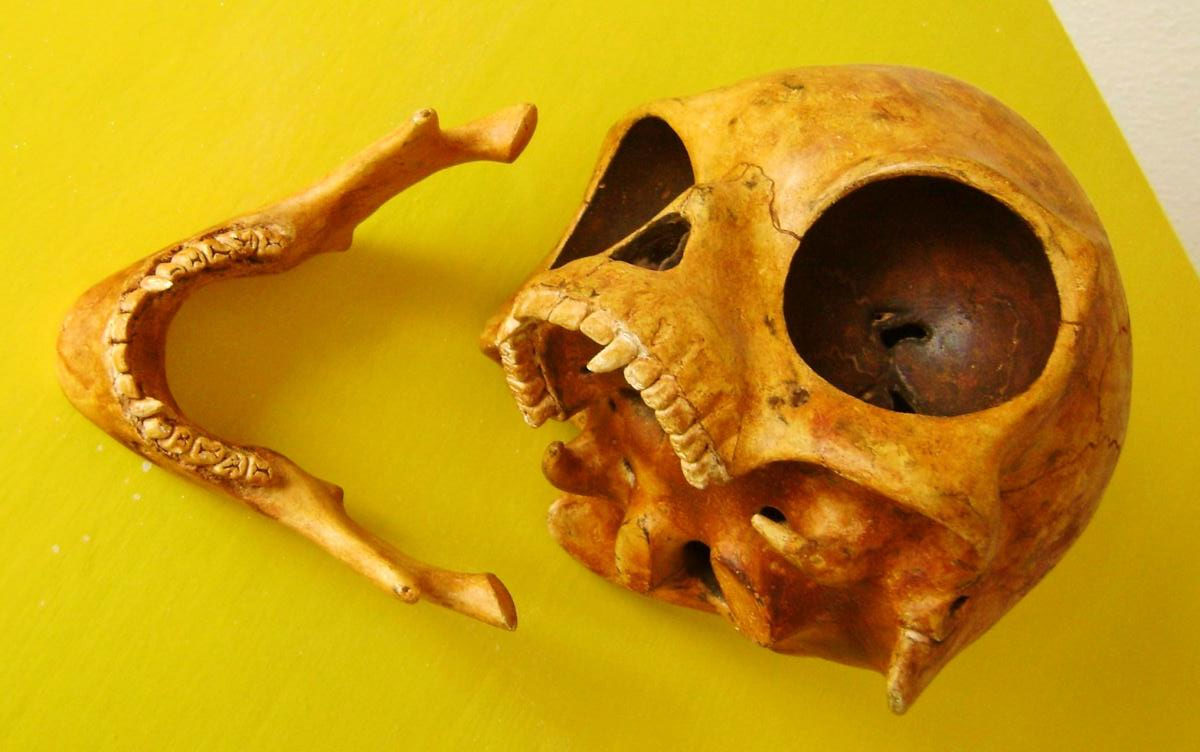 The Andahuaylillas mummy In 2011 Renato Davila Riquelme of the Privado Ritos Andinos museum in Cuzco, Peru, made a startling discovery. In the village of Andahuaylillas, which is located approximately 22 miles southeast of Cuzco and used to be part of the Inca empire, he found two small mummies (22). One mummy was incomplete, but when the other was unwrapped, a curious little figure appeared. The head was nearly as big as the 1.5-foot torso. Its set of teeth was fully grown, but contained many fewer molars than humans have. The eye sockets were also much larger than those of humans. Its fontanelle was open, which usually only occurs in babies of less than one year old. Davila Riquelme invited three anthropologists from Spain and Russia to come take a look. They examined the little creature and concluded that it couldn't be human. They wanted to do DNA research on tissue in the right eye socket to determine whether it might be extraterrestrial, but as far as we know, the results of that research have never been made public. In June 2012 researcher Brien Foerster, also assistant manager of the "Paracas History Museum", began a second attempt (23).
The horned skulls of Sayre 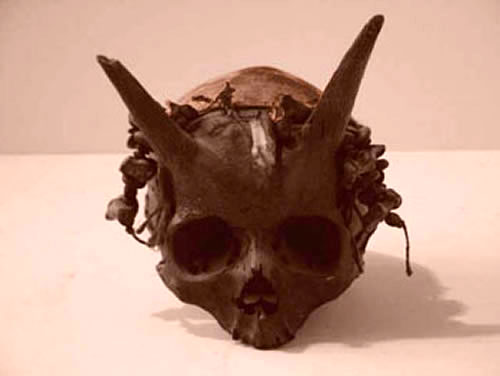
The authenticity of the photo above cannot possibly be proven, yet we thought it couldn't be missing from this page :) According to various internet sources (24), this photo belongs to an American newspaper article from 1916 (25). In it, the discovery of 68 skeletons in an old burial mound near the town Sayre in Pennsylvania, USA, is reported. Remarkable is that these skeletons not only have an average length of seven feet (some even longer), but the men have horns. The bones were estimated to be a minimum of 700 years old. They were sent to a museum in New York to be examined, but there they mysteriously disappeared and nothing has been heard of them since. Several days later a spokesperson declared in this same newspaper that these were no horned skulls, but "human remains mixed with deer antlers". Whether this is true cannot be said, because spreading disinformation is a standard procedure of the elite concerning cases that should remain hidden from public. See, for example, the crashed UFO near Roswell in 1947, which turned into a "weather balloon" the next day (26). In any case, the explanation about deer antlers does not seem to match this photo. According to us, the fact that an entire page in the newspaper was written about it back then and the fact that similar articles exist on identical finds in different places (27), adds to the credibility of the story. But as no evidence is available anymore, it can no longer be determined whether it concerned true facts. The question to what extent those horned giants were of extraterrestrial origin will, for the time being, probably remain unanswered. ------------------------------------------------------------------------------------
  Donations to support our work are received in gratitude If you send us an e-mail, we will give you the specifics. |
|||